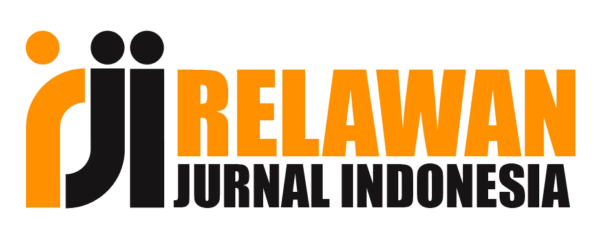Pengaruh model pembelajaran levels of inquiry terhadap kemampuan berpikir kritis siswa
Abstract
This research is motivated by the increasingly rapid progress of the times towards the 21st century. Model Levels of Inquiry helps students practice critical thinking skills, but due to environmental differences, it is difficult for students to think critically as they should. The author also wants to analyze the steps of learning model Level of Inquiry between Interactive Demonstration and Inquiry Laboratory media PhET Simulation on students' Critical Thinking Ability. The method used in this research is quantitative by means of an experiment. The population of this study were 11th grade high school students at SMA Negeri 1 Cimahi, while the sample in this study were 60 students in two classes. The instruments used are lesson plans, Learning Implementation Sheets and Thinking Ability Test Sheets. The tests carried out on the research were T-test and N-Gain. The results showed that the two learning steps had an effect on increasing students' critical thinking skills with a large score of 53.81 in the Interactive Demonstration and 67.23 in the Inquiry Laboratory. Model Levels of Inquiry improves students' critical thinking skills, this can be seen from the results of the T test conducted with equal variances assumed sig level. (2 tailed) of 0.01<0.05.
Keywords
Full Text:
PDF (BAHASA INDONESIA)References
Achmad, M., & Suhandi, A. (2017). Effect of levels of inquiry model of science teaching on scientific literacy domain attitudes. Aip Conference Proceedings, 1848(1).
Banchi, H., & Bell, R. (2008). The many levels of inquiry. Science and Children, 46(2), 26.
Bogar, Y. (2019). Literature review on inquiry-based learning in science education. Uluslararası Bilim ve Eğitim Dergisi, 1(2), 91–118.
Ennis, R. H. (2011). The Nature of Critical Thinking: An Outline of Critical Thinking Dispositions and Abilities.
Khoiri, A., & Haryanto, S. (2018). the 21St Century Science Skills Profile Based Local Wisdom Education (Tourist Attractions and Typical Foods in Regency of Wonosobo). Jurnal Penelitian Dan Pengabdian Kepada Masyarakat UNSIQ, 5(3), 361–371. https://doi.org/10.32699/ppkm.v5i3.485
Lomax, R. G. (2000). An Introduction to Statistical Concepts for Education and Behavioral Sciences. Lawrence Erlbaum Associates.
Mutohhari, F., Sutiman, S., Nurtanto, M., Kholifah, N., & Samsudin, A. (2021). Difficulties in implementing 21st century skills competence in vocational education learning. Int J Eval & Res Educ, 10(4), 1229–1236.
Qadafi, M., & Hastuti, A. (2022). Pengaruh model pembelajaran project based learning (pjbl) terintegrasi stem pada mata pelajaran fisika untuk meningkatkan kemampuan berfikir kreatif peserta didik sma tgh umar kelayu tahun ajaran 2021/2022. Jurnal Pengabdian Magister Pendidikan IPA, 5(2), 223-228.
Rahayu, S. (2020). The Effectiveness of New Inquiry-Based Learning (NIBL) for Improving Multiple Higher-Order Thinking Skills (M-HOTS) of Prospective Chemistry Teachers. European Journal of Educational Research, 9(3), 1309–1325. https://doi.org/10.12973/eu-jer.9.3.1309
Roni, S. M., Merga, M. K., & Morris, J. E. (2020). Conducting quantitative research in education. Springer.
Runnel, M. I., Pedaste, M., & Leijen, Ä. (2013). Model for guiding reflection in the context of inquiry-based science education. Journal of Baltic Science Education, 12(1), 107.
Sari, E. R., Marungkil, P., & Sahrul, S. (2017). Pengaruh Model Discovery Learning Terhadap Hasil Belajar Fisika pada Pokok Bahasan Kalor di SMP Negeri 2. Jurnal Inonovasi Dan Pembelajaran Fisika, 1(1), 119–126.
Sihaloho, R. R., Sahyar, S., & Ginting, E. M. (2017). The effect of problem based learning (PBL) model toward student’s creative thinking and problem solving ability in senior high school. IOSR Journal of Research & Method in Education (IOSRJRME), 7(04), 11–18.
Suhendi, H., Mulhayatiah, D., & Zakwandi, R. (2018). Effect of Dynamics Rotation Worksheet on Student Critical Thinking Skills Reviewed From IQ Score. Scientiae Educatia: Jurnal Pendidikan Sains, 7(1). https://doi.org/10.24235/sc.educatia.v7i1.2162
Tompo, B., Ahmad, A., & Muris, M. (2016). The Development of Discovery-Inquiry Learning Model to Reduce the Science Misconceptions of Junior High School Students. International Journal of Environmental and Science Education, 11(12), 5676–5686.
Toutenburg, H., & Shalabh. (2019). Statistical Analysis of Designed Experiments.
Wenning, C. J. (2010). Levels of inquiry: Using inquiry spectrum learning sequences to teach science. Journal of Physics Teacher Education Online, 5(4), 11–19.
DOI: https://doi.org/10.17509/wapfi.v9i1.45523
Refbacks
- There are currently no refbacks.
Copyright (c) 2024 Intan Rasyta

This work is licensed under a Creative Commons Attribution-ShareAlike 4.0 International License.
The Journal Wahana Pendidikan Fisika http://ejournal.upi.edu/index.php/WapFi/ is licensed under a Creative Commons Attribution-ShareAlike 4.0 International License
The Journal WaPFi (Wahana Pendidikan Fisika).
All rights reserverd. pISSN 2338-1027 eISSN 2685-4414
Copyright © Faculty of Mathematics and Science Education (FPMIPA) Universitas Pendidikan Indonesia (UPI)










